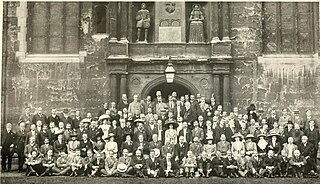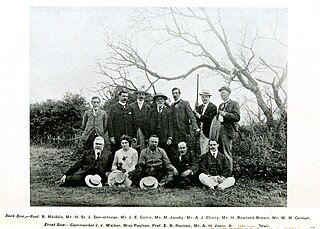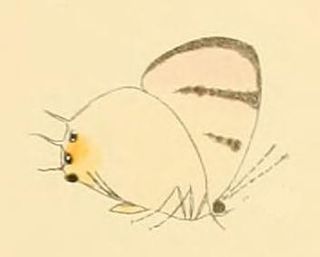Related Research Articles

The superfamily Papilionoidea contains all the butterflies except for the moth-like Hedyloidea.

Lycaenidae is the second-largest family of butterflies, with over 6,000 species worldwide, whose members are also called gossamer-winged butterflies. They constitute about 30% of the known butterfly species.

Riodinidae is the family of metalmark butterflies. The common name "metalmarks" refers to the small, metallic-looking spots commonly found on their wings. The 1,532 species are placed in 146 genera. Although mostly Neotropical in distribution, the family is also represented both in the Nearctic, Palearctic, Australasian (Dicallaneura), Afrotropic, and Indomalayan realms.

The short-tailed blue or tailed Cupid is a butterfly that forms part of the family Lycaenidae. It is found from Europe to Japan and in India.

William Chapman Hewitson was a British naturalist. A wealthy collector, Hewitson was particularly devoted to Coleoptera (beetles) and Lepidoptera and, also, to birds' nests and eggs. His collection of butterflies, collected by him as well as purchased from travellers throughout the world, was one of the largest and most important of his time. He contributed to and published many works on entomology and ornithology and was an accomplished scientific illustrator.

Lycaeninae, the coppers, are a subfamily of the gossamer-winged butterflies (Lycaenidae).

Miletinae is a subfamily of the family Lycaenidae of butterflies, commonly called harvesters and woolly legs, and virtually unique among butterflies in having predatory larvae. Miletinae are entirely aphytophagous. The ecology of the Miletinae is little understood, but adults and larvae live in association with ants, and most known species feed on Hemiptera, though some, like Liphyra, feed on the ants themselves. The butterflies, ants, and hemipterans, in some cases, seem to have complex symbiotic relationships benefiting all.

Polyommatinae, the blues, are a diverse subfamily of gossamer-winged butterflies.
The Oxylidini are a small tribe of butterflies in the family Lycaenidae. It is alternatively treated as a subtribe, Oxylidina, of the Theclini.

The Aphnaeinae are a subfamily of butterflies in the family Lycaenidae.

George Thomas Bethune-Baker was an English entomologist who specialised in Lepidoptera, especially those in the family Lycaenidae of butterflies.

Syrmoptera is a genus of butterflies in the family Lycaenidae. They are found in the Afrotropical realm.

Rachana is a genus of butterflies in the family Lycaenidae.

Hamilton Herbert Charles James Druce was an English entomologist who specialised in Lycaenidae and to a lesser extent Hesperiidae. He is not to be confused with his father, the English entomologist Herbert Druce (1846–1913) who also worked on Lepidoptera.

Syrmoptera amasa, the white false head, is a butterfly in the family Lycaenidae. It is found in Nigeria, Cameroon and Gabon. The habitat consists of forests.
Syrmoptera bonifacei, commonly known as Boniface's false head, is a species of butterfly in the family Lycaenidae, named for Boniface Watulege. It is found in Nigeria, Cameroon, and the Republic of the Congo. The habitat consists of forests.
Syrmoptera homeyerii is a butterfly in the family Lycaenidae. It is found in the Democratic Republic of the Congo and Angola.
Syrmoptera melanomitra is a butterfly in the family Lycaenidae. It is found in Cameroon, Gabon, the Republic of the Congo and the Democratic Republic of the Congo.
References
- ↑ "Syrmoptera Karsch, 1895" at Markku Savela's Lepidoptera and Some Other Life Forms
- ↑ Afrotropical Butterflies: Lycaenidae - Subtribe Oxylidina